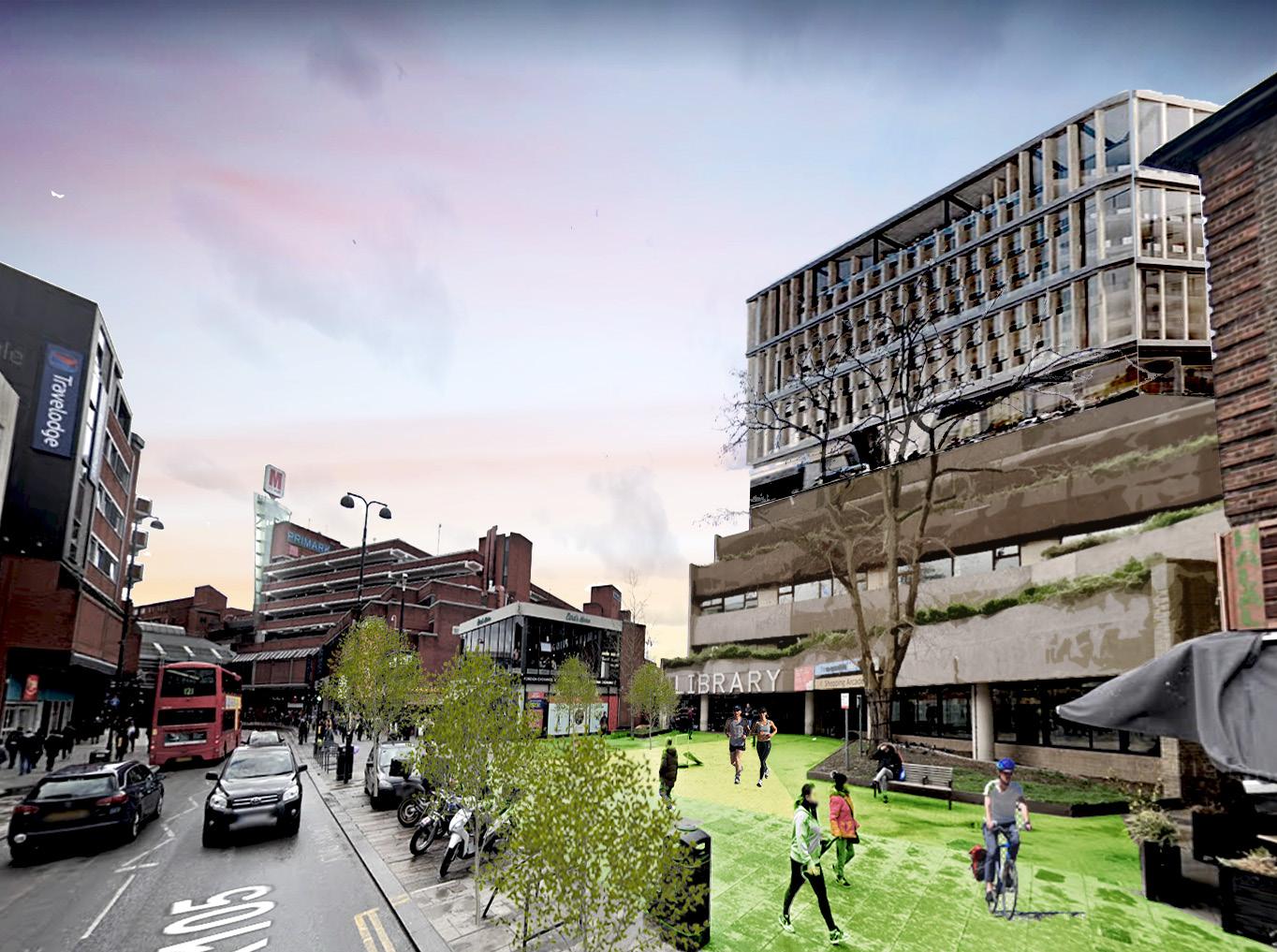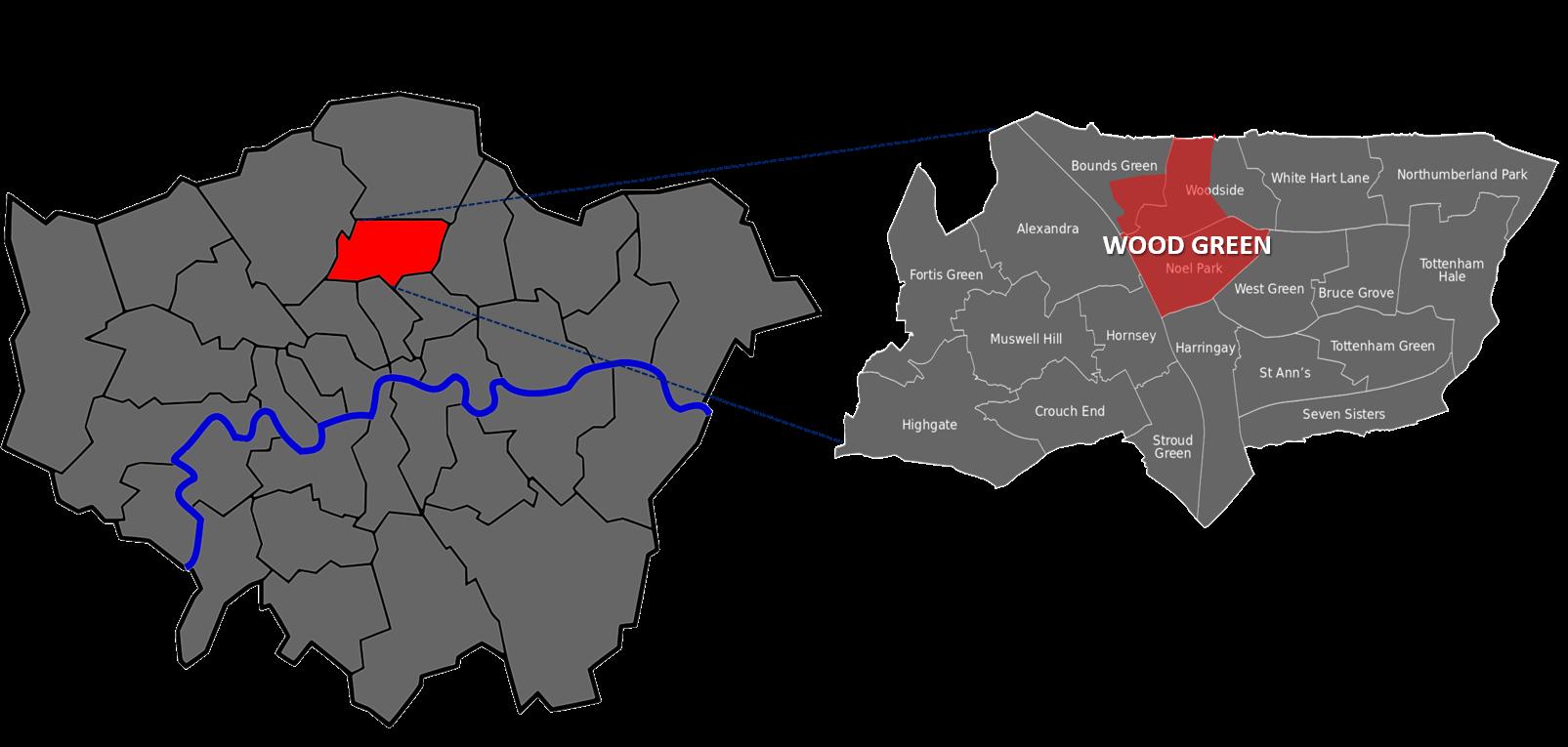
4 minute read
Executive Summary
from W11P169
by PDF Uploads
Context
Wood Green is a large retail and commercial hub in North London, which is located in the London Borough of Haringey and recognised as one of London’s Metropolitan’s Town Centres (GLA, 2016; GLA, 2019). Wood Green contains a concentrated mix of employment opportunities and services for both residents in the neighbourhood and more widely in the borough . Despite its status, Wood Green’s building stock suffers from physical decay and there is a prevalence of both serious crime and public health issues, such as youth crime, anti-social issue and obesity. Similarly, the neighbourhood is highly deprived, ranging from most deprived to second most deprived on England’s Indices of Multiple Deprivation (CDRC, 2019), and local businesses cannot satisfy residents employment needs, leading to the outflow of large number of labourers. This document provides a regeneration strategy for Wood Green through comprehensive analysis and pertinent interventions.
A full description of the context of Wood Green is contained in Sections 1.1-11.
Opportunities and Threats
An analysis of the relationships between urban problems in Wood Green (or “linkages”) and its strengths, weaknesses, threats and opportunities relevant to regeneration are presented in Sections 1.12-13. A high-level summary of this section is presented below.
The vibrancy of the High Road and the presence of a productive creative economy in the adjacent industrial neighbourhood are the primary advantages for the regeneration of Wood Green. Secondly, several existing underutilised and vacant sites provide sufficient available spaces for redevelopment and the attraction of SMEs and start-up companies, which can strengthen the local economy and provide more job opportunities. Thirdly, Wood Green has strong transport connectivity and its existing links can be further enhanced. For example, the pedestrian links to Alexandra Park in the West can be improved to enhance residents’ accessibility to existing green spaces. Finally, Wood Green is recognised as an Opportunity Area and Growth Area by the GLA (GLA, 2016; GLA, 2019) and an Area of Change by the local authority (HC, 2017), which demonstrate its importance to London and Haringey and the existing support for its regeneration.
In addition to the issues identified in the first paragraph, Wood Green residents face high rates of in-job poverty and a prevalence of physical and mental health issues, which put pressure on public health and welfare services in Haringey. Additionally, a high percentage of residents are renters which creates risks of displacement associated with new development in the area. Vision, Objective and Intervention
The vision of this regeneration strategy – Wood Green a Healthy Heart of Haringey – is to protect and exploit the vibrancy of the High Road and Creative Quarter while increasing the quantity and access to jobs and homes, and focus on addressing the current low levels of health and well-being, as well as tackling high rates of crime, deprivation, and perception of lack of safety.
Based on the linkage and the SWOT analysis, eight objectives have been identified to address the primary urban problems facing Wood Green, which are:
1. Exploit Existing Public Transport Links 2. Increase Employment Opportunities and Support Improvement of Skills 3. Utilize Existing Business Hubs Facilities and Expertise 4. Reduce Car Dependence and Road Traffic 5. Protect the High Footfall on the High Road 6. Tackle the sources of Mental Health Issues 7. Support the reduction of Youth Crime and Anti-Social Issues 8. Improve Access to existing Green and Blue Facilities
In order to achieve these objectives, four major interventions will take place during the regeneration:
The Culture and Social Community Hub
This intervention is to redevelop the site of the existing Wood Green library and customer service offices for a unified multi-storey social and public services well-being centre, which includes job search and training facilities, flexible and multi-use spaces, vulnerable people help centre and public green spaces.
The High Road regeneration
This intervention aims to protect high footfall and reduces car use on the High Road. With combination of soft and hard intervention, recycling facilities and the Cycle Ways in this area will be improved and one car parking floor will be transformed into the local farmers market.
Circulation improvement
This intervention aims to create more permeable and accessible routes to encourage flows between East and Wst part of Wood Green by redesigning the wayfinding signages, enhancing the lighting and reconnecting the existing dead end streets in the area.
Property Development
This intervention will provide 70,553m2 of employment floor space and 3,788 new net residential units, including a training academy, to leverage the under-utilised land and vacant sites and address the high in-job poverty and underemployment in Wood Green. The development will be carefully planned and delivered to protect the vibrancy of the High Road and the Cultural Quarter.
The vision, objectives and full descriptions of these intervention are contained in Section 2.1-6.
Implementation
The project will be delivered in four phases spanning 15 years in total. In Phase 1, the Social and Cultural Community Hub will be completed with 5 years; Phase 2, the new residential and mixed-use development will start in year 1 of the project and will complete in 15 years; Phase 3 will support the High Road regeneration which is comprised of temporary and long-term interventions delivered over 13 years, the circulation and legibility intervention, Phase 4, will begin at the very start of the project and last for 15 years. The regeneration will be delivered by a joint venture which will be formed by the local authority and a private sector development partner or partners, and will be supported by a strategic planning team. A steering group, comprising representative of key stakeholders, will oversee the joint venture.
After the completing the final stage of the development, the joint venture will be dissolved, and responsibilities related to the long-term operation and maintenance of the assets created by the regeneration of Wood Green will be devolved to the relevant parties primarily Haringey and the private development partner(s).
The full implementation strategy in contained in sections 3.1-7.




